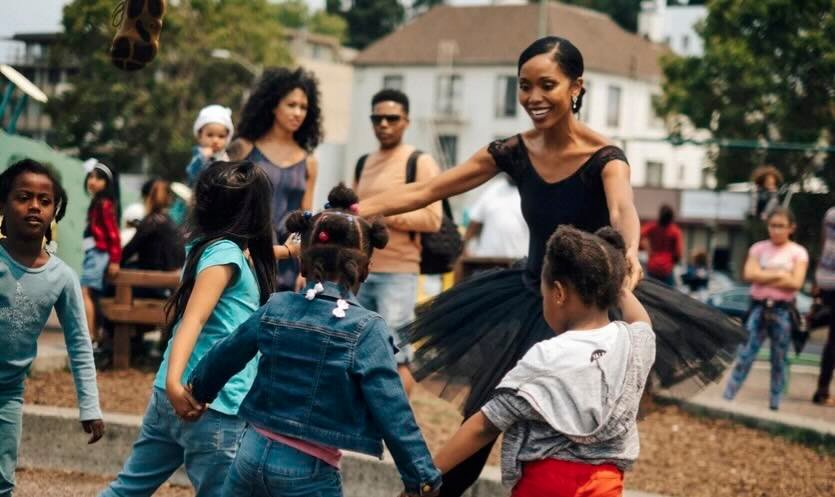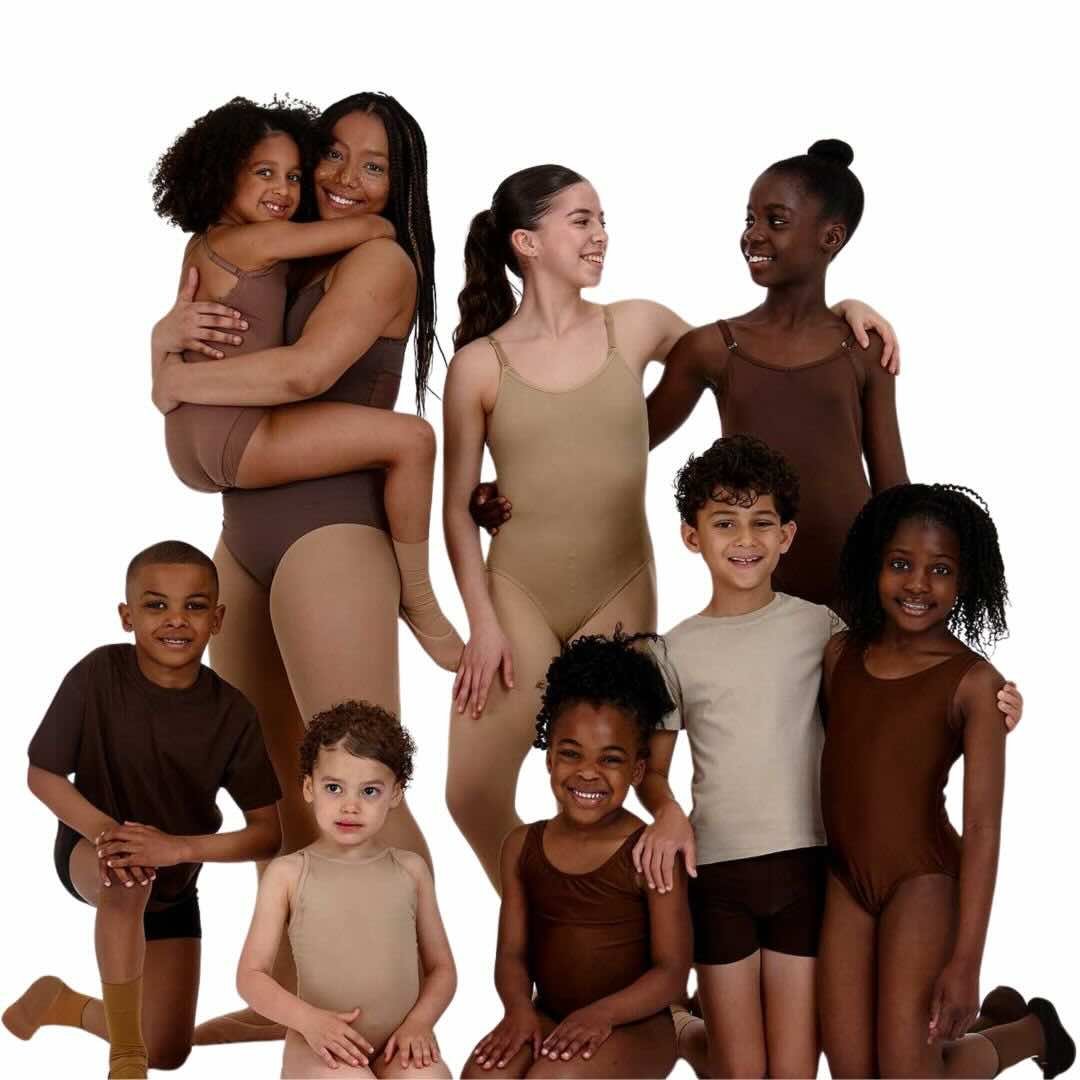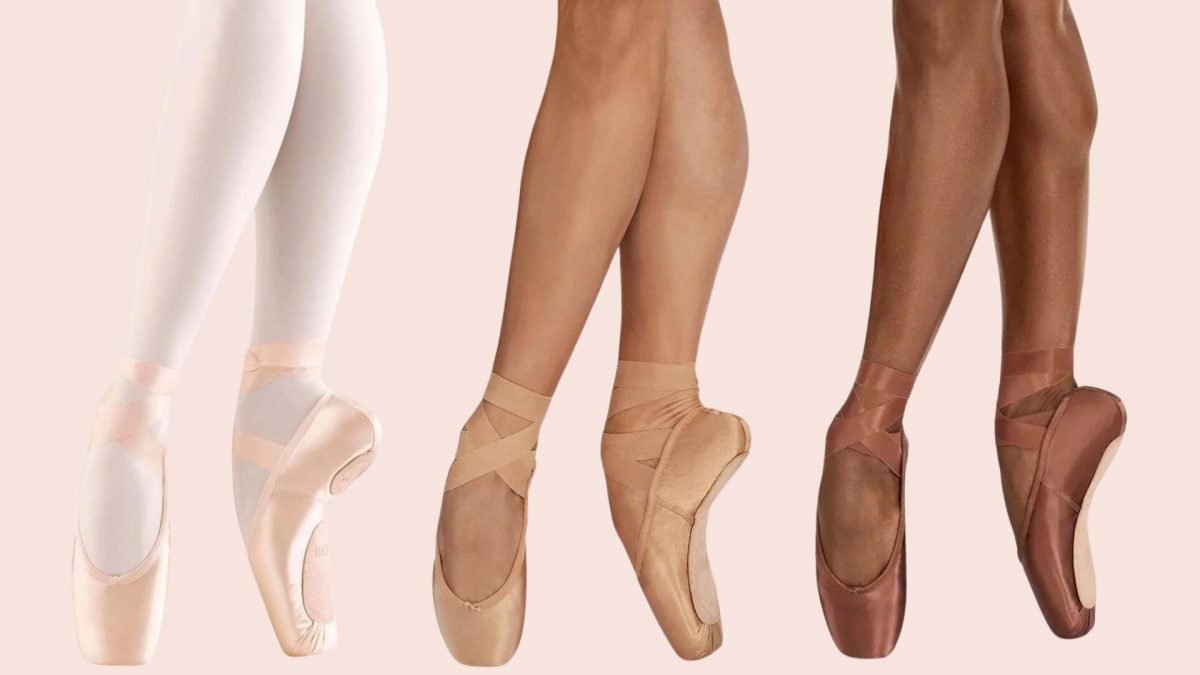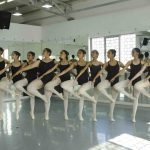How Inclusivity in Ballet Attire is Transforming the World
By Pragati Athreya in En Avant July August 2024
Tracing Traditions of Uniformity Dress to Include
For decades, ballet costumes have embodied a uniform aesthetic aligned with the classical ideal of the ballet dancer: pale skin and a specific body type. Tights and shoes were produced in ‘European pink’ to match the skin of the dancers, extending their lines and creating pleasant visual uniformity. The tradition of wearing pink tights in ballet is rooted in Euro-centric beauty standards. While long-standing traditions play a role in preserving art forms, this particular practice symbolises ‘cultural hegemony,’ or the hidden racist and imperialist values within ballet, as dancers of colour enter the industry.
Ballet is often seen as an ‘exclusive’ and ‘elitist’ art form that prevents performers from economically disadvantaged backgrounds from accessing it. It became an all-Caucasian art form and those who did not match the standards were forced to conform to the ‘European pink’ since the 19th century. The same goes for flat and pointe shoes; they were made in a single shade that ignored the diversity of dancers’ complexions. Darker-skinned dancers needed to tint their shoes with paint or dye themselves to match their skin tone. This act of ‘pancaking’ pointe shoes—the popular symbol of ballet—acts as a reminder to dancers of different ethnicities that they are not a part of the art. The disproportionately low representation of these dancers has led to a lack of incentive for dancewear and pointe shoe manufacturers to diversify their products to meet the needs of this demographic.
 Similarly, unconventional dancers, including those with physical disabilities, were often excluded from ballet. The strict standards did not accommodate those with different physical capabilities, reinforcing a narrow view of who could participate in this art form. As Kate Stanforth, founder of Kate Stanforth Academy of Dance, a school that helps disabled children and adults, said, “My wheels are my legs and dance is my job”, so why should differently-abled dancers be exempted from the art?
Similarly, unconventional dancers, including those with physical disabilities, were often excluded from ballet. The strict standards did not accommodate those with different physical capabilities, reinforcing a narrow view of who could participate in this art form. As Kate Stanforth, founder of Kate Stanforth Academy of Dance, a school that helps disabled children and adults, said, “My wheels are my legs and dance is my job”, so why should differently-abled dancers be exempted from the art?
Several initiatives like Project Plié by the American Ballet Theatre in 2013 and The Swan Dreams Project by Aesha Ash in 2011, among others, have been inspiring and training minority groups and inner-city children to embrace ballet! The National Ballet School in Canada organised Assemblée Internationale, a gathering of dancers and teachers from different ballet schools around the world (dancers of colour have found some of these schools!) and all expenses for the attendees were paid by the NBS, breaking the financial barriers several dancers face. At Assemblée Internationale, performances were held with blended casts so that the budding ballerinas could work together, rather than compete against each other. This has led to growing numbers of dancers of myriads of ethnicities and races. Dance truly is a universal language of expression and creativity, shattering language barriers and bringing people together!

Photo: Richie Gunzer
The Journey to Racial Inclusivity in Dancewear
A major step towards inclusion in the industry was when dancewear companies started manufacturing tights and shoes in an array of shades to match dancers of the ever-evolving world of ballet. Although this seems to be a superficial change, it has a massive impact on the views of ballet, challenges long-held notions of uniformity in ballet and shines a light on the unique character of each dancer. This change has been a long time coming, but as the saying goes, ‘Better late than never’.
Cassa Pancho’s Ballet Black was founded in the UK to create a prominent platform for Asian and Black dancers as well as to establish new repertoires. It has been a big player in the movement in British ballet by promoting skin-coloured tights and shoes, advocating for racial inclusivity in ballet’s traditionally rigid aesthetic standards. Circa Robinson, a senior dancer at Ballet Black said, “I can just put (toned pointe shoes) on and dance. I know that many people will be like, ‘OK, it’s just a shoe.’ But a ballet dancer loves their shoes like a basketball player loves their basketball. They’re mine. They’re a piece of me.”

Shades dancewear
Nashville Ballet is advancing racial equality by transitioning all its dancers to flesh-tone tights. Even the ISTD (Imperial Society of Teachers of Dancing) and BBO (British Ballet Organisation) have updated their dancewear guidelines, now offering a range of skin tone options for tights, socks, and shoes. They are preserving the beauty of ballet while making it more accessible to everyone and reinvigorating it with fresh energy.
As mentioned earlier, ballet’s uniformity has been built around the visual ideal of pale skin, often leaving darker dancers feeling alienated. The emotional and psychological effects of a lack of representation can be profound, affecting a dancer’s confidence and performance. The difference in colour of their tights to the rest of their body causes a disconnect in their movements, causing them to appear shorter and more misaligned, rather than having seamless lines. Dancers of colour have long faced the challenge of having to alter their shoes—a process of applying foundation or dye to make their pointe shoes match their skin tone. This practice is time-consuming, and tedious, causes wastage of makeup and does not always result in success. Offering skin tone tights and shoes ensures that dancers are celebrated and seen in their art form, while simultaneously altering and maintaining ballet’s uniformity.
Major dancewear companies, such as Bloch and Capezio, have followed suit in this inclusivity movement, expanding their colour ranges of pointe shoes, flat shoes, tights and leotards to be more diverse. All this would not have been possible without the influence of prominent ballerinas like Misty Copeland, the first and only Black principal dancer in the American Ballet Theatre, Michaela DePrince, Esie Mensah, Ingrid Silva and others. Although they are not the first dancers of colour to take on major roles, they are among the most outspoken. Sudarsna Mukund, a young activist and South Asian ballet dancer is committed to exploring culture and the intersection between art and social advocacy, particularly the challenges of racism. All these ballerinas inspire young dancers who have historically been left out of the ballet narrative, showing them that they too have a place on the world’s greatest stages. As Misty Copeland said, “It’s time to write our own story.”
Toned ballet attire is becoming more commonly available in large dancewear stores and online, making it easier for dancers to find their shade. However, availability is limited to certain locations, mainly in the USA and the UK. Dancers may still find it challenging to access these tights and shoes, particularly in smaller dancewear shops or in areas with fewer resources dedicated to ballet or dance in general. When it comes to suitability, the newer ballet shoes for dancers of colour now match the quality of traditional ‘European pink’ shoes for the same or similar price. They provide the same level of support, durability, and craftsmanship, allowing dancers to perform confidently, knowing their shoes both suit their skin tone and meet ballet’s demands.
The journey toward racial inclusivity in ballet is far from complete, but the progress so far is nothing short of thrilling! As the ballet world continues to grow and minorities break into the industry, it drives toward a future where all dancers can see themselves reflected in the art they love.
 Embracing All Abilities Through Adaptive Clothing
Embracing All Abilities Through Adaptive Clothing
As the ballet world continues to embrace diversity, the focus has expanded beyond just race and ethnicity. Adaptive clothing is paving the way for dancers with disabilities to break the stigma that differently-abled people cannot perform the same tasks or have lives like able people.
Programs like Nashville Ballet’s Adaptive Dance: New Perspectives, created by Occupational Therapist Hannah Mathews, and the Joffrey Academy of Dance’s Adaptive Program are offering opportunities for students with diverse movement abilities to learn and enjoy the elements of dance. Nashville Ballet offers classes without tuition fees in a traditional studio environment where young dancers are provided a space that brings joy and nurtures confidence while encouraging increased body awareness, coordination, and strength. However, the industry must also look towards supporting disabled dancers, like funding for equipment, e.g. higher mobility wheelchairs, to help them dance on stage and job opportunities for budding ballerinas. For example, in ballet exams, the ISTD has an Applications for Reasonable Adjustments form that teachers can fill out to make the exam a place for every single student to be able to do their best. Hopefully, with the advent of more such developments in adaptive clothing and policies and new shows featuring a disabled cast, situations will ameliorate.
In 2024, Victoria Jenkins, a disability advocate and designer, announced a collaboration with icandance, a London-based charity that empowers disabled children through dance. She recently created a bespoke ballet costume for 18-year-old wheelchair-using dancer, Denecia Allen, who wore the dress to perform with English National Ballet’s Alice Bellini at the Empower In Motion Gala at Sadler’s Wells. The costume allowed maximum comfort and freedom while remaining aesthetically beautiful. Prima Soft has creatively designed the ‘I Can Do It by Myself’ 2-piece leotard for anyone, specifically young dancers, requiring the use of insulin pumps, colostomy bags, feeding tubes, or other medical devices. Embracing the rise of adaptive clothing serves as a powerful message to disabled dancers and inspires the new generation.
Where can the future lead?
Who knows what the future of ballet has for us, but one thing is for sure: someday there will be a little bit of every person on the planet represented on stage. The rise in popularity of brown tights and shoes, and adaptive ballet attire over the years will contribute to the further (much-needed!) diversification of the ballet we know today.








Your article perfectly addresses many of the questions I’ve had about this subject. The clarity of your explanations is impressive, and I found the whole piece very informative.